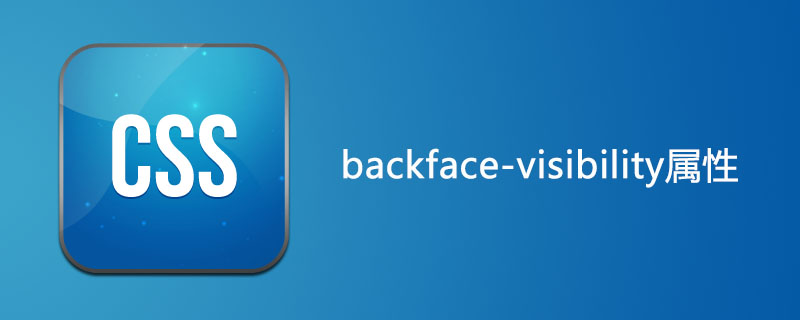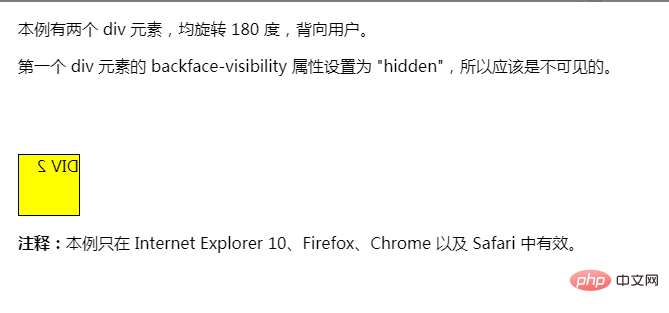
css backface-visibility property is used to define whether the element is visible when it is not facing the screen. This property is useful if you rotate an element and don't want to see its back side. The syntax is backface-visibility: visible|hidden.

#How to use the css backface-visibility property?
Function: The backface-visibility attribute defines whether the element is visible when it is not facing the screen. This property is useful if you rotate an element and don't want to see its back side.
Grammar:
backface-visibility: visible|hidden
Description: The back of visible is visible. The hidden backside is invisible.
css backface-visibility property usage example
<!DOCTYPE html>
<html>
<head>
<style>
div
{
position:relative;
height:60px;
width:60px;
border:1px solid #000;
background-color:yellow;
transform:rotateY(180deg);
-webkit-transform:rotateY(180deg); /* Chrome and Safari */
-moz-transform:rotateY(180deg); /* Firefox */
}
#div1
{
-webkit-backface-visibility:hidden;
-moz-backface-visibility:hidden;
-ms-backface-visibility:hidden;
}
#div2
{
-webkit-backface-visibility:visible;
-moz-backface-visibility:visible;
-ms-backface-visibility:visible;
}
</style>
</head>
<body>
<p>本例有两个 div 元素,均旋转 180 度,背向用户。</p>
<p>第一个 div 元素的 backface-visibility 属性设置为 "hidden",所以应该是不可见的。</p>
<div id="div1">DIV 1</div>
<div id="div2">DIV 2</div>
<p><b>注释:</b>本例只在 Internet Explorer 10、Firefox、Chrome 以及 Safari 中有效。</p>
</body>
</html>Effect output:

The above is the detailed content of How to use css backface-visibility property. For more information, please follow other related articles on the PHP Chinese website!